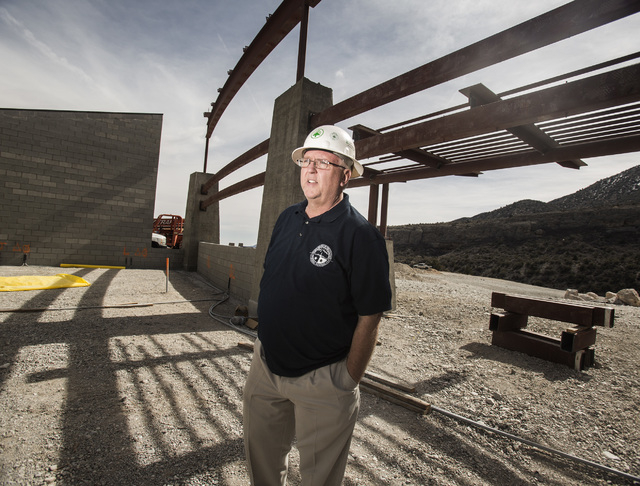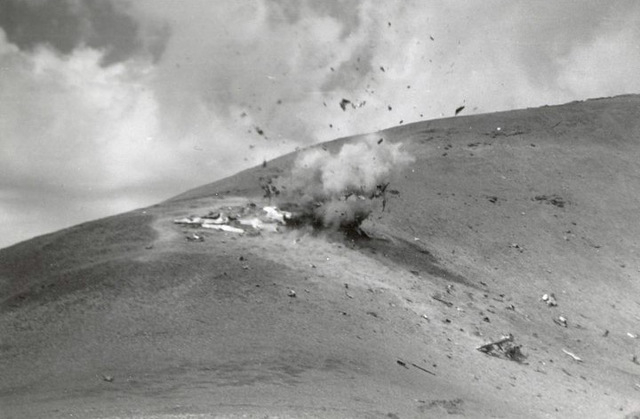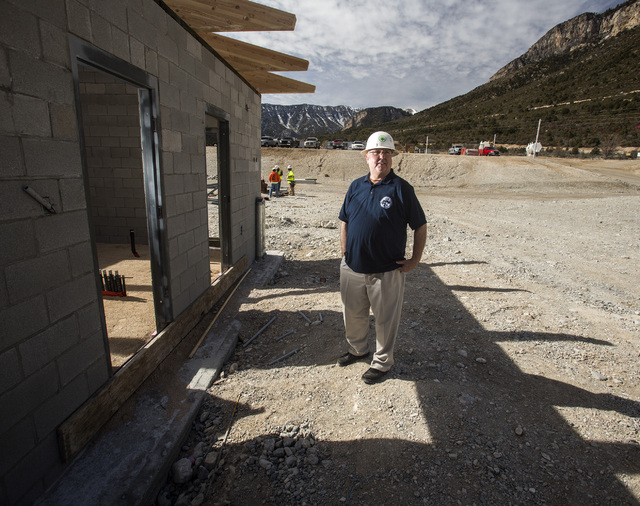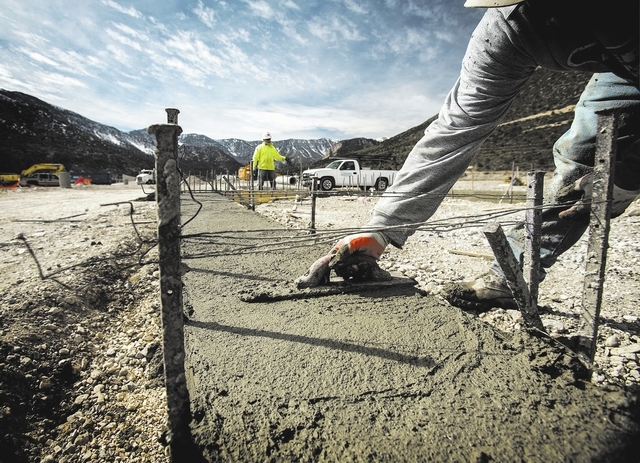Cold War memorial under construction on Mount Charleston










With each step Steve Ririe takes through the Spring Mountains Visitor Gateway construction site he comes closer to the finish line of a journey that began 15 years ago.
That’s when he launched a campaign to establish a nonprofit corporation to raise money to build the Silent Heroes of the Cold War National Memorial. After raising $200,000 and persuading Congress to grant national status for the memorial, he said he is “about $50,000 shy” of reaching the goal.
Meanwhile, earthmovers rumbled through the 43-acre U.S. Forest Service site Tuesday at the Kyle Canyon approach to Mount Charleston. While construction workers pounded wooden forms for the tiered amphitheater seats, Ririe gazed at the mountain and pondered what the Gateway center will be when fundraising is done and the memorial flanks it, hopefully, in the spring of 2015.
“It’s hard to even imagine after many years of work to see construction started. It’s unbelievable,” said Ririe, 54.
“I made a promise to the families of the people who died up there. And, to not see it through, it wouldn’t be right. I’m just glad to see it’s being constructed,” he said.
“And to be part of the Spring Mountains National Recreation Area, it’s the way it was meant to be.”
The memorial is expected to be a popular attraction in the Gateway, which will serve as an information, recreation and transportation hub for the Spring Mountains. The $15 million project, separate from the Cold War memorial, is funded through the sale of public land under the Southern Nevada Public Land Management Act. The project includes a visitor center, picnic area, hiking, biking and horseback riding trails, and the amphitheater along with firefighting and administration facilities.
It was near the snow-capped, 12,000-foot Mount Charleston peak where a transport plane taking government workers to Area 51 to test the U-2 spy plane crashed in November 1955, killing all 14 on board.
Ririe was inspired to chart a course for the memorial after he hiked to the crash site in 1998 and wondered who died in the wreckage.
After following a trail of records from the Air Force to the National Archives and Records Administration to the CIA, he sought and obtained a declassified investigation report that launched his odyssey to find the families of the men who were killed.
Investigators determined that the C-54 transport plane had departed Burbank, Calif., in the early morning of Nov. 17, 1955, bound for the secret “Watertown” airstrip along Nevada’s dry Groom Lake bed, 90 miles northwest of the Las Vegas Valley.
After arriving at what is now widely known as Area 51, the team was supposed to perform a flight test of the U-2, a spy plane equipped with long-range cameras.
The U-2 was designed to fly at altitude of 70,000 feet to observe Soviet missile sites while staying out of range of MiG fighter jets.
But the team’s transport plane never arrived at Groom Lake.
The pilot, 1st Lt. George Pappas, had become disoriented while flying in radio silence through a 60-knot crosswind under visual flight rules during a blizzard.
Instead of avoiding Mount Charleston, he was mistakenly on a path toward the peak above Kyle Canyon.
The plane clipped the ridge 50 feet below the crest, skipped about 60 feet, and slid another 20 feet before it came to a rest and partially burned.
After a mountaineering team on skis and snowshoes from March Air Force Base in California failed to locate the crash site, about 20 men on horseback from the Clark County Mounted Posse and two Air Force officers reached the wreckage to recover the bodies and the U-2 project’s top-secret paperwork.
Much of the plane’s fuselage remained intact on the ridge until the summer of 1956 when, at the request of the Forest Service, Air Force crews blew it up with dynamite because its precarious positioning posed a safety hazard.
Some of the families weren’t aware that their loved ones had worked for the CIA, and most had not been fully informed about the details of the mission they were on.
In 2001, Ririe organized an expedition for the men’s relatives to trek to the site and retrieve remnants of the plane for historical purposes with the consent of the Forest Service.
While the memorial will honor those 14 U-2 engineers and flight crew who died that day, Ririe said it will also recognize the tens of thousands who served in the Cold War that spanned five decades to avert a nuclear conflict with the former Soviet Union.
“We will have field trips at the memorial for families and students,” he said.
“This will be a place where they’ll actually learn about the Cold War.”
Contact reporter Keith Rogers at krogers@reviewjournal.com or 702-383-0308. Follow him on Twitter @KeithRogers2.












